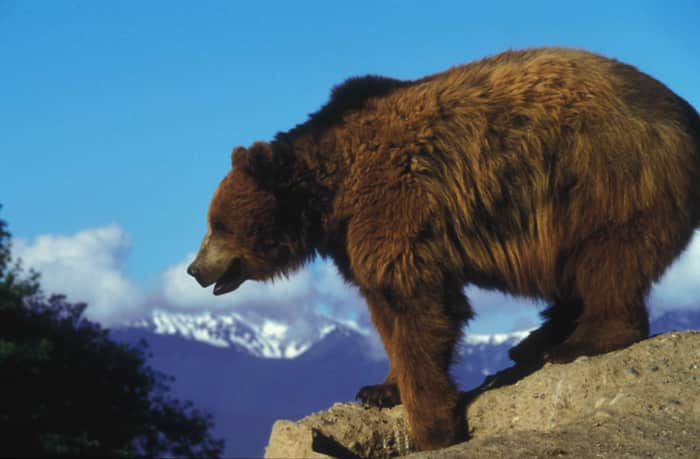Salazar: New Yellowstone Grizzly Bear Delisting Proposal by 2014
OutdoorHub Reporters 07.24.12

Department of the Interior (DOI) Secretary Ken Salazar has written a response to Wyoming Governor Matt Mead’s request that final assessment and delisting of the Yellowstone grizzly bear population be completed and proposed in two years’ time. Secretary Salazar wrote Mead last week saying that the U.S. Fish and Wildlife Service (USFWS) and other agencies will finish their analysis of the decline of whitebark pine tree and how that affects bear populations by early 2014. The letter also states that the USFWS will once again propose delisting the grizzly from the Endangered Species Act following the completion of its studies.
Yellowstone grizzlies were originally delisted by the USFWS, which is part of the DOI, in 2007, but that decision was challenged by the Greater Yellowstone Coalition, a Montana environmental group. This challenge has led to a lengthy legal battle that is only now starting to see some sort of resolution.
The original delisting was overturned by a District Court in 2009. The USFWS appealed that ruling and a mixed final decision was brought down by the U.S. Court of Appeals for the Ninth Circuit in the fall of 2011. The decision by the Court of Appeals mostly supported the USFWS’ decision to delist the grizzly but declared that the USFWS had failed to conclusively prove that the decline in whitebark pine tree populations would not harm the bears. The Court of Appeals mandated that deeper research be conducted to examine the effect of the whitebark’s decline on grizzlies before a delisting could be followed through with.
Seeds from the whitebark pine tree are an important food source to grizzly bears and supporters of continued federal listing fear that the bear population will plummet if the threatened tree is wiped out. But USFWS scientists say bears have been doing fine finding other food sources and that the decline of the whitebark pine is not a serious threat. Adhering to the Court of Appeals’ order that deeper research be conducted, Salazar asserts that
…the Service [USFWS] convened all the agency partners in the Interagency Grizzly Bear Study Team in the Yellowstone ecosystem, including members of the Wyoming Game and Fish Department, for group discussions on how to best proceed. We also brought in numerous outside experts in bear biology and statistics to give careful consideration to reexamination of whether the declines in whitebark pine poses a threat to grizzly bears sufficite [sic] to remain on the lists of endangered or threatened species. All participants agreed that the Yellowstone grizzly population was recovered and that declines in whitebark pine do not threaten the future of this grizzly population.
Salazar went on to convey the USFWS’ dismay at the ruling and their desire to “improve the probability of success if a new decision was again challenged in court.” They then developed a new approach to strengthen their second delisting proposal, which is planned to be completed and put forth by early 2014.
Biologists estimate there are currently about 600 grizzly bears in the Greater Yellowstone area. Between 2000 and 2010, their population has increased at yearly rates of 4 to 7 percent. In an interview with the Associated Press, Mark Bruscino, supervisor of the large carnivore section at the Wyoming Game and Fish Department (DFG), said “the Yellowstone grizzly population is doing fantastic, it’s the wildlife management success story of the last 30 years in North America.”
It is expected that Governor Mead will allow sport hunting of the bears in Wyoming once the federal government turns grizzly bear management over to the states. Mead has cited them as a heightened threat to humans in light of four humans fatalities in the Greater Yellowstone area over the past two years.
“We will probably never hunt large numbers, just because there won’t be a lot of probably surplus mortality that could go into a hunting quota,” Bruscino said. “But we will probably hunt some bears.”
In the meantime, the USFWS studies are continuing and all stakeholders look forward to seeing the agency’s final decision.

